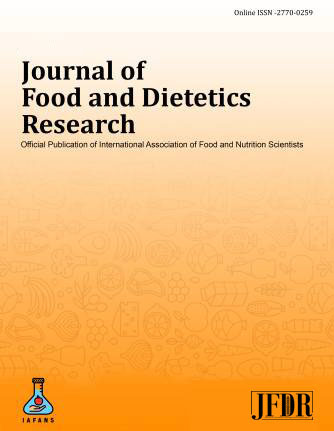Homemade blenderized Ryles tube formula is equally efficient as commercial formula in terms of anthropometric and biochemical measurements in tertiary care neurologic intensive care unit: A single center study
DOI:
https://doi.org/10.48165/JFDR.2021.1201Keywords:
Malnutrition, Neurosurgical intensive care unit, Enteral nutrition, Homemade blenderized formula, Commercial formulaAbstract
Objectives: In Indian intensive care units (ICUs), malnutrition is a leading cause of death and morbidity. There is
a scarcity of information on the state of malnutrition in India and the efficacy of homemade Ryle’s tube formula
in neurologic cases as compared to commercial formula feed. The goals of the present study were to evaluate the
nutritional status of neurological disorder patients, to prepare a home-based feed using locally available cereal
and pulse combinations, and to investigate the impact of two different Ryes tube formulas on nutritional status.
Material and Methods: A prospective, randomized comparative study was conducted in the neurological ICU
of a tertiary care medical college hospital located in rural Telangana. Group A was given commercial formula,
while Group B was given homemade Ryle’s tube formula, which was calorically equivalent to commercial formula.
The Harris-Benedict equation was used to determine the patients’ caloric requirements. During hospital stay,
both groups received a comparable amount of Ryle’s tube feeding. The impact of two different formulations was
evaluated using quantitative indices including weight, body mass index, triceps skinfold thickness, and serum
albumin over a period of 2 weeks. The standard deviation and mean were determined. The researchers used a
paired t-test with a two-tailed distribution. If the P < 0.05, it was considered significant. For data processing,
open-source software open Epi 2007 was used.
Results: In both classes, thirty patients were enrolled. On admission, the demographic profiles of both groups
were identical, as evidenced by non-significant P-values. According to the sample parameters, there was no
substantial difference between the two formulas at the end of the study period. Both formulas were equally
efficacious for the nutritional assessment parameters during the study period.
Conclusion: On initial admission, malnutrition was uncommon in the neurologic ICU. In terms of study
parameters, both formulas were equally efficient. The homemade blenderized formula was 50% less expensive
than commercial formula, making it an important nutritional supplementation option for the deprived strata of
the population.








